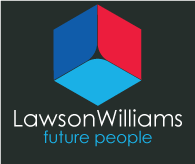The impact of disruptive technologies on Kiwis – Jan2016
The impact of disruptive technologies on Kiwi’s
Welcome back to 2016…
By the time you read this article we will all be full on into another year.
As usual at this time of the year we return to a large amount of commentary on what the year or future might hold for us. One jumped out at me last week about the future world of work, focused around a recent report by the New Zealand Institute of Economic Research (NZIER) on behalf of the Chartered Accountants Association. “The impact of disruptive technologies on Kiwis”. (Oct 2015)
A core conclusion from the NZIER’s research is that almost half of all jobs in New Zealand today are at risk of technological displacement over the next few decades. This includes jobs in sectors that have not traditionally borne the brunt of technological displacement such as financial services, public administration and scientific and technical services as well as the more repetitive manual roles.
The scale of this statement took me by surprise; really, in 20 years could half of the jobs in New Zealand today be gone or replaced by new ones?
The purpose of this article is not to debate this issue. Whether its 20 years or 30 years or 40 years, the important thing to grasp is that increasingly and at greater speed it will happen and importantly it will happen in our lifetime.
Interestingly this week while at my first client meeting for the year I was confronted with what some are predicting to be one of the great next disruptive technologies. Our client provides technology for training and is rapidly heading into the world of Virtual or Augmented reality. Yes, we have all heard of it and most of us understand it to be relevant to the likes of the Gaming industry and the likes of Peter Jackson and Weta Workshop in wellington. My client however thinks differently, they think this has the potential to be the next technological game changer and what’s more the first real commercial product has just been launched by Microsoft, called “Hololens” and it runs on the Windows 10 platform.
If you have some spare minutes do some searching and make up your own mind. See how Trimble in Christchurch are already using the product (google Hololens and Trimble), or how Volvo are starting to use the product (google Hololens and Volvo) and if you have more time see some future examples from Microsoft https://www.youtube.com/watch?v=iu0gM0_vxIM.
Depending on our personalities we will react to this information and approach the future with optimism and/or pessimism. For many there is enormous opportunity with change, it can be hugely exciting and rewarding. For others this degree of change brings real uncertainty and concern.
What do we need to do?
The NZIER report makes useful recommendations on the future actions that need to be taken by government, business and individuals. Here is the list of recommendations for individuals.
- Keep abreast of technological and business model changes that affect your occupation and understand the implication for future careers.
- Be ready to re-invest in training several times in a career and proactively pursue retraining opportunities.
- Be fast adopters – realise the increased consumption choices, cost savings, and potential income sources that new technologies can bring.
- Take care to avoid being constrained by perceptions of traditional gender roles in your career choices – the outlook for occupations dominated by men to be at most risk of job dislocation.
The NZIER report confronts us with “disruption” at the beginning of a new year; the list above confirms that we cannot take our careers for granted any more.
Improving our adaptability will be crucial to securing the benefits and minimizing the risks from technological change.
What can we do now?
The longer I am in recruitment the more I am convinced that in addition to being future focused, the key for most people to secure their future and to increase the sustainability of their career is to “be the best they can be now”.
There are common traits that employers look for to differentiate employees. Many research projects have been done to assess and rank these and there are considered approximately 15 of them. Interestingly there are a core number that always rank at the top, the top 5.
So my suggestion is, invest in the top 5, become the best you can be with these…
Communication.
Collaboration/Teamwork.
Continuous learning.
Innovation and Creativity.
Leadership.
So, welcome back to 2016. We look forward to presenting through the careers section this year information and insight on “being the best you can be – right now”
